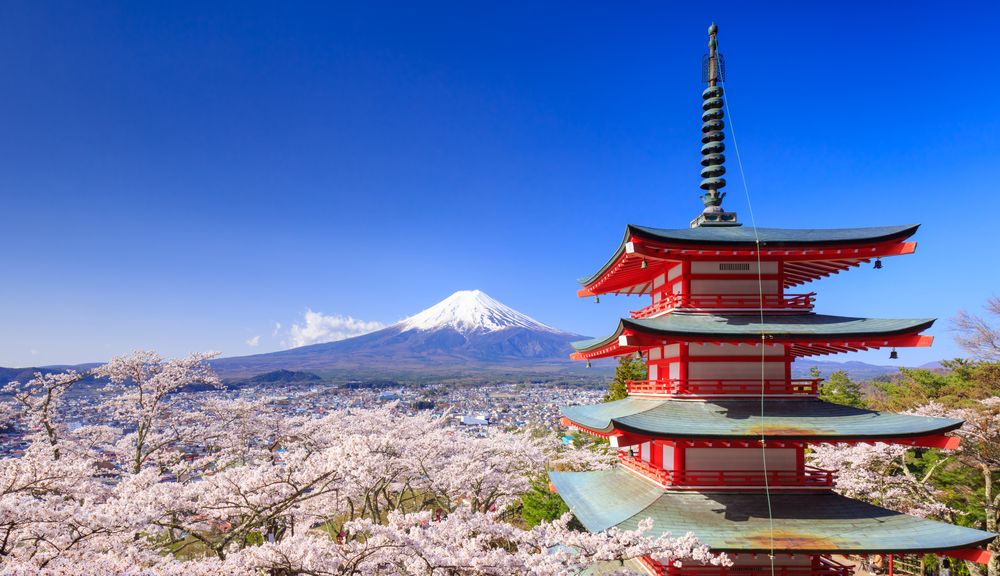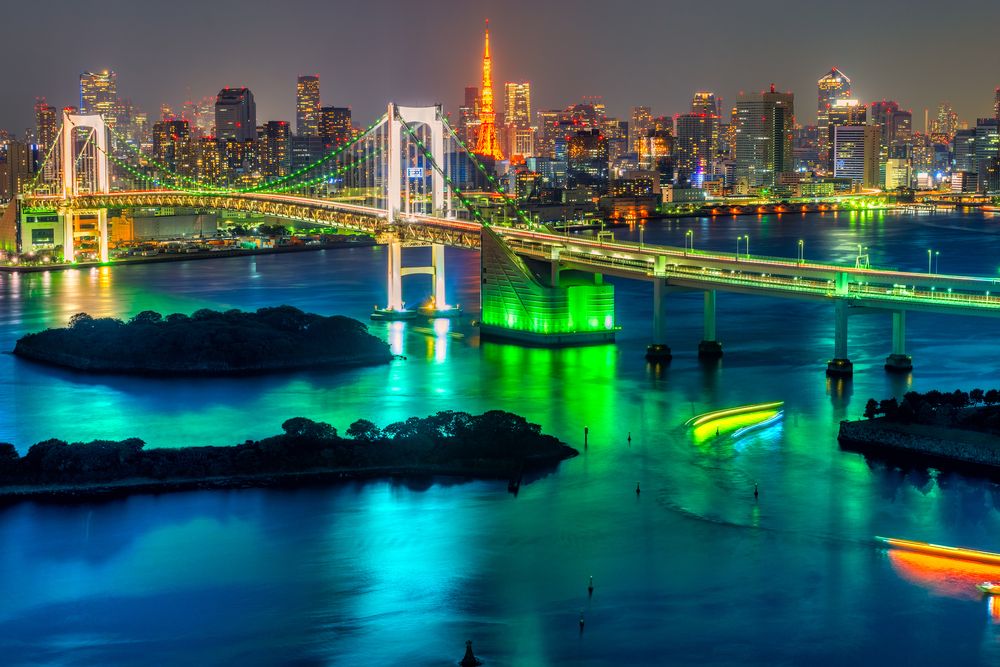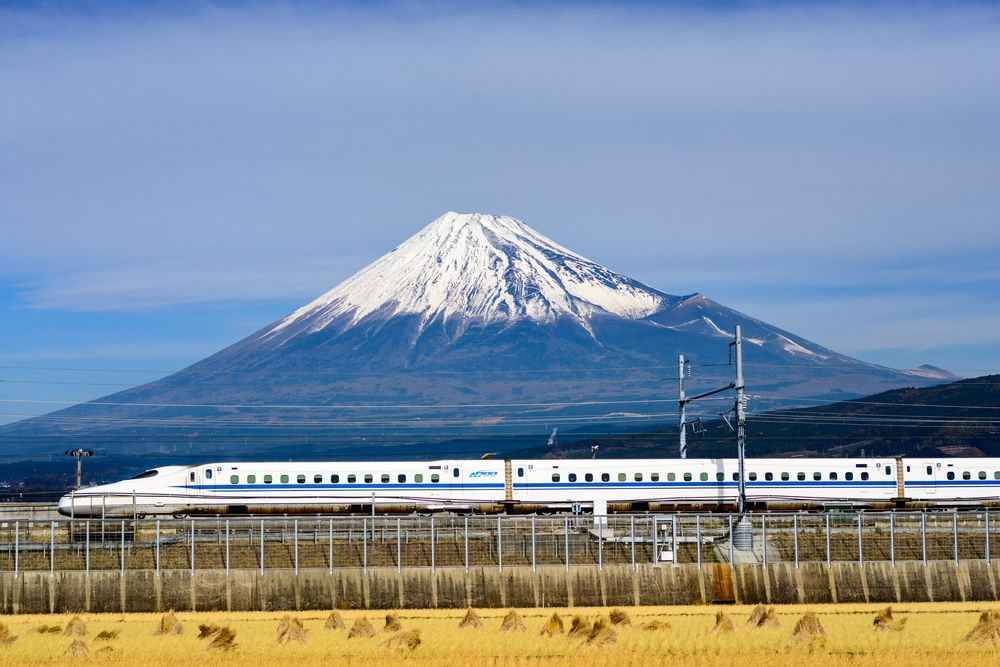Motegi, Japan
Japan is the home to MotoGP™ powerhouses Honda, Yamaha and Suzuki - this makes it one of the biggest manufacturers of motorcycles in the world. The country has a rich motorcycle racing heritage and Motegi Twin Ring Circuit has been a permanent fixture on the MotoGP™ calendar since it first hosted a race in 1999.
The very first Japanese Grand Prix was held back in 1963 at the Suzuka circuit, with 40 Grand Prix taking place in the Land of the Rising Sun by 2017.

Why we love Motegi and Japan
Traveling to Japan in general is an inspiring experience and the country’s vast sprawling capital Tokyo is one of the most exciting cities to visit. The sights and sounds of the world's largest metropolis contrasts vastly with the peaceful natural landscapes of the northern Kanto district which is home to the Motegi track.
The history, culture and vibrancy of Japan’s cities are complimented beautifully by the remote temples, deep forests and tranquil mountains. Combining urban adventures with rural exploration can be the perfect way to experience Japan.
Indeed few other nations industrialised as rapidly and dramatically as Japan did in the 20th century and it is partly the contrast between the ultra-modern high-tech and the ancient, traditional culture of the country which makes this such an enchanting place.
Travel through Japan’s picture perfect countryside on the famous high-speed and hyper-efficient bullet trains between Tokyo and the cities of Yokohama, Osaka, Nagoya and Kob. Seemingly within a matter of seconds, you can move from scenes of farmers tending paddy fields, to hip teenagers hanging out at the local video game boutique.
Useful Information
Capital / Nearest City: Mito
Time zone: GMT +9
Currency: Japanese yen (symbol: ¥; code: JPY)
Electric plug type: A & B
Important telephone numbers:
Emergency services: 119 (fire and ambulances), 110 (police)
Directory Assistance: 104
Narita (Tokyo) Airport: +81 476-34-8000
Japan National Tourism Organization: +81-3-3201-3331
Circuit: http://www.twinring.jp/english/
Airport: http://www.narita-airport.jp/en/
Tourist board: http://www.jnto.go.jp/eng/
Local transport: http://www.jnto.go.jp/eng/arrange/transportation/
Language: Japanese
Finding the right accommodation
Some of the hotels close to the Motegi circuit are fairly isolated which adds to the charm of visiting rural Japan but means planning your evening meals and other excursions in advance is worthwhile if you are venturing out to eat.
Mito, the capital city of Ibaraki Prefecture, which has a population of approximately 270,000 people, is the nearest main city to Motegi and has plenty of hotels to accommodate guests with a range of budget options available, though it is worth booking in advance.
If you are staying in bigger cities on the same trip – especially in Tokyo – you will notice that accommodation is more expensive and hotel rooms can often be pretty compact compared with other parts of the world. Renting private accommodation is also an option, with plenty on offer in the larger Japanese cities.
Exploring Motegi and Kanto
When visiting Motegi, the Honda Collection Hall museum is a must-see, with more than 300 two and four-wheeled vehicles on display, from production machinery to race prototypes, demonstrating decades of automotive history.
Staying in or visiting nearby Mito will give you a feel for a smaller Japanese city, but make sure you also schedule in some time in Tokyo, to experience one of the great capital cities.
In Tokyo itself any visitor will have a plethora of things to see and experience, such as a stroll in the city’s Shinjuku-gyoen park, some shopping at Nakano Broadway (a vintage 1960s shopping mall), or taking in the hustle-bustle of Shibuya Crossing, which is said to be the busiest intersection in the world. The Meiji Shrine is Tokyo's most famous Shinto shrine. Seeing Lake Ashi and Mount Fuji is also an enjoyable day trip from Tokyo by bullet train.
Traveling in Japan is easy by road or rail, and the bullet train will also take you to the beautiful and tranquil city of Kyoto, with its traditional Japanese gardens, shrines and temples. Kyoto is a truly stunning city and is about 80 kilometres from Suzuka, the home to the famous 8-hour endurance event.Tips for visiting Motegi and Kanto
The delights of the local cuisine such as sushi, ramen (egg noodles in a salty broth), unagi (grilled eel), tempura (deep-fried batter-coated seafood and vegetables), to name just a few types of dish, are a key part of enjoying a trip to Japan. There is usually good Japanese beer available in most restaurants or bars, and naturally a glass of Sake wine adds to the experience.
On the subject of food, the Tsukiji Fish Market in Tokyo is the world’s largest and has remarkable tuna auctions for those up early enough at 5am.
Some chopstick etiquette basics are also good to keep in mind, such as not crossing them (when you are not using chopsticks during a meal you should place them neatly alongside each other) and not playing with your chopsticks (don’t point with them or wave them around, as they should only be used for eating). Also don’t pick up food with chopsticks by sticking them into the food and don’t use them to pass food to others.
Also in Japan you are often given an Oshibori (wet towel) in restaurants or cafes and they are to be used for cleaning hands, fingers and the mouth, not for the rest of the face or neck.
Carrying a decent amount of cash with you is handy as theft is not common and a surprising amount of restaurants, shops and businesses don’t accept credit cards. Make sure your phone is compatible with a Japanese network and has a good data package as it will be useful for translating on the move and for keeping track of your location in case you get lost following signs written in Japanese!
Did you know?
The Kanto region includes seven prefectures: Gunma, Tochigi, Ibaraki, Saitama, Tokyo, Chiba, and Kanagawa, with a population of around 42 million people - approximately one third of the total population of Japan. In the first setting of both the anime and the game series 'Pokemon', is an area named after Kanto, and designed on the geography of the region.



